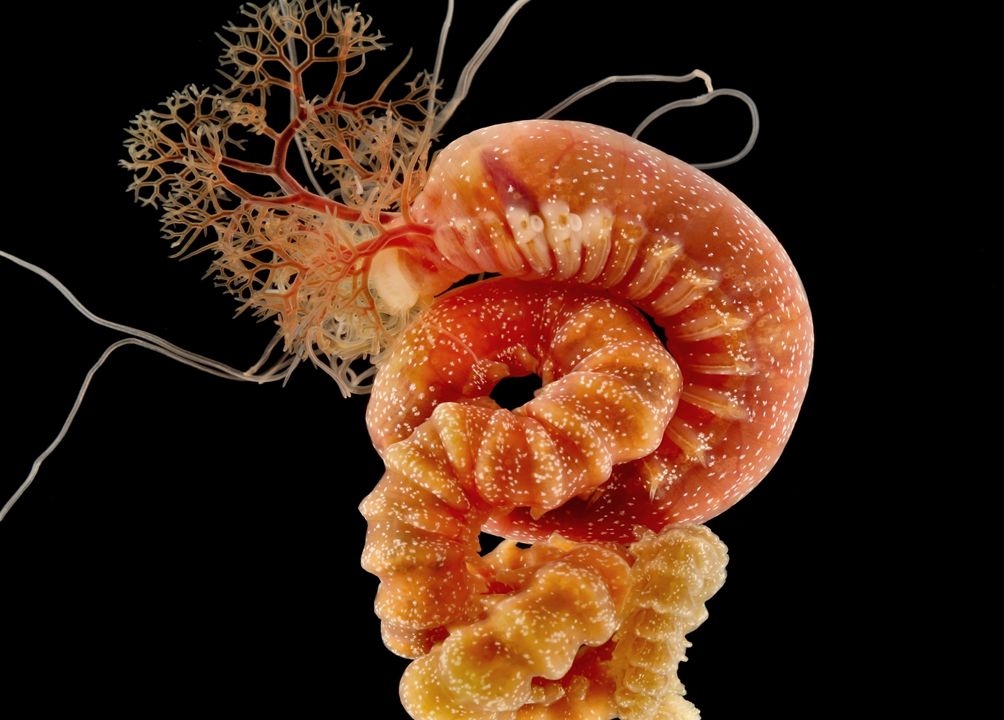Text and pictures by Maël Grosse
Among all the worm-like animals in the sea, polychaetes, or bristle worms, are probably the most diverse and striking group. This month is the opportunity to look at one of the most beautiful group of polychaetes (Fig. 1), the family Terebellidae Johnston, 1846, also called spaghetti worms.
The phylogeny and classification of this group is still debated (Stiller et a. 2020), but in its broadest appreciation, it contains about 730 species. They are present in most marine ecosystems, from shallow to deep water and tropical to arctic waters (Hutchings et al. 2021). These animals are in majority sedentary, which means that they live inside tubes built in the seafloor or attached to rocks or shells. However, they can also swim when disturbed or looking for a new home, which is a sight to see!
Terebellids range from a few millimeters to 65 cm (Lavesque et al. 2017), although most species are a few centimeters in length. As their name indicates, they are characterized by the long and numerous tentacles surrounding their mouth. These tentacles are a bit sticky and covered in small cillia. They are used for feeding and are very elastic, easily extending to several times the body length of the animal. As the worms mostly stay inside their tubes, the tentacles are often the only part one can see when snorkeling and diving (if one is not upturning every other rock looking for little critters to collect as we do!). Another feature that makes spaghetti worms amazing is their colour. While some species can be pale and nearly transparent (Fig, 2), many are very colourful with beautiful patterns of red, pink, orange and sometimes green or purple! In addition, while colourful animals are often restricted to more tropical waters, this is not the case here as some very pretty species (such as Nicolea venustula, Fig. 1) can be found in Scandinavia.


References:
Hutchings, P., Carrerette O., Nogueira J.M.M., Hourdez S., Lavesque, N. (2021). The Terebelliformia – Recent Developments and Future Directions. Diversity, 13(2), 60. https://doi.org/10.3390/d13020060
Lavesque, N., Bonifácio, P., Londoño-Mesa, M., Le Garrec, V., Grall, J. (2017). Loimia ramzega sp. nov., a new giant species of Terebellidae (Polychaeta) from French waters (Brittany, English Channel). Journal of the Marine Biological Association of the United Kingdom, 97(5), 935-942. doi:10.1017/S0025315417000571 Stiller, J., Tilic, E., Rousset, V., Pleijel, F., Rouse, G.W. (2020). Spaghetti to a Tree: A Robust Phylogeny for Terebelliformia (Annelida) Based on Transcriptomes, Molecular and Morphological Data. Biology, 9(4): 73. https://doi.org/10.3390/biology9040073
![]()

1 Comment on “Group of the month: Spaghetti worms (Annelida, Terebellidae)”